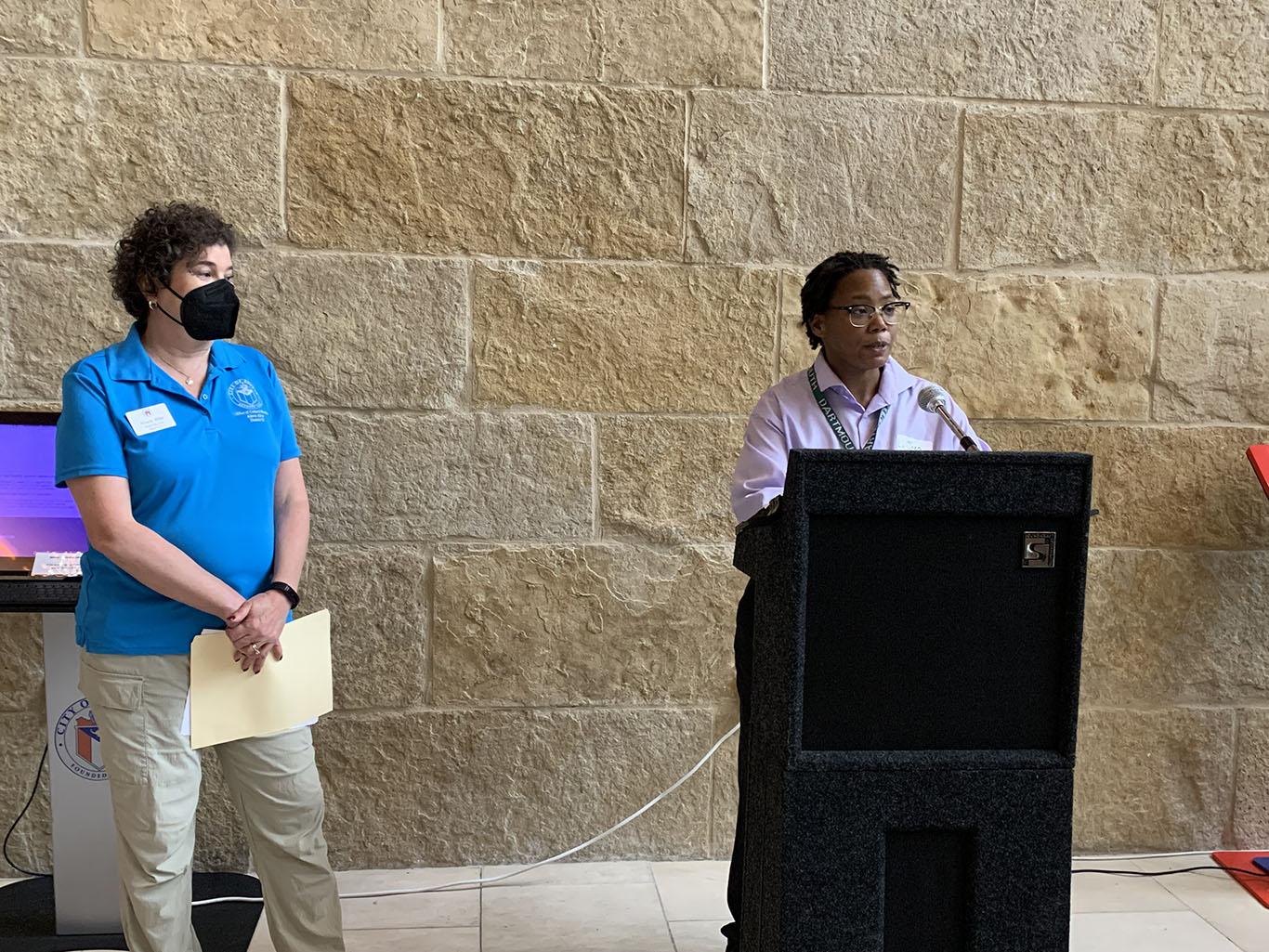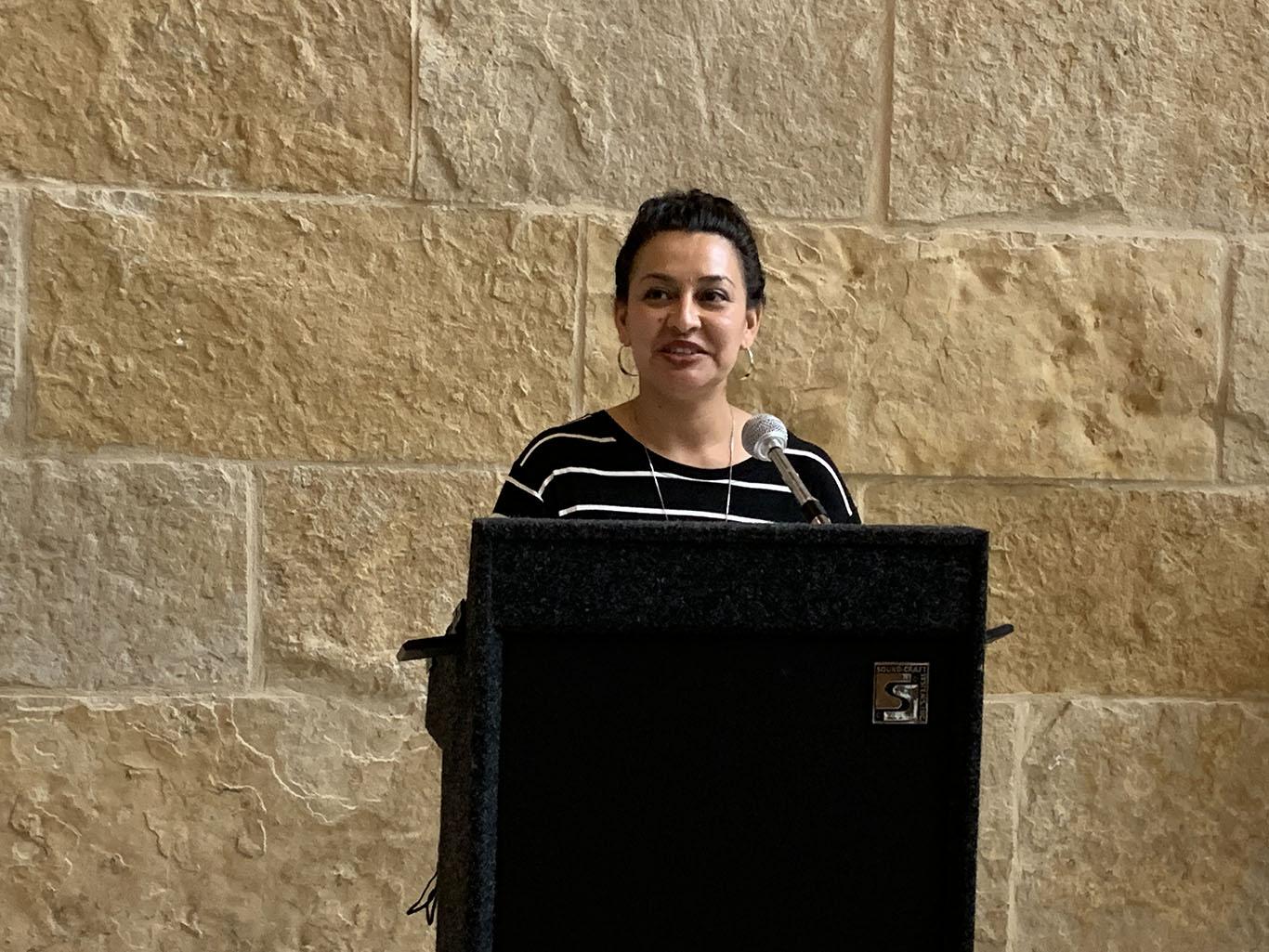
On May 20, the Austin Civilian Conservation Corps (ACCC) and the UT School of Architecture’s Community and Regional Planning program hosted a reception to kick off a weeklong Photovoice Exhibition in the lobby of City Hall in downtown Austin. The reception showcased the lived experiences of ACCC participants, and was organized by Miriam Solis, Ph.D., assistant professor in the UT School of Architecture; a team of Community ad Regional Planning graduate students; and LaJuan Tucker, interim project manager for the ACCC at the City of Austin. It included remarks by Mayor Pro-Tem Alison Alter.
The photovoice exhibition is part of a larger green jobs study conducted by Michael Oden, Ph.D., associate professor in the UT School of Architecture, that was made possible by an interlocal agreement between the City of Austin and UT Austin.

Through this interlocal agreement, the City of Austin can collaborate more easily with UT Austin researchers on research projects, especially those that help achieve the City’s Strategic Direction 2023 goals. Staff in the City of Austin reached out to Planet Texas 2050, a research grand challenge, for help convening the green jobs study.
Photovoice is a research method capable of fostering dialogue and shaping narratives. Solis and her students asked participants to document their work with ACCC by taking photographs while in the field and writing brief descriptions that provide context for the picture, including their thoughts and feelings about their experience in the program.
“The advancement of social justice is central to participatory action research (PAR) and photovoice projects like this one. The methodology is premised on engaging historically marginalized communities as co-researchers to generate accurate information and link it to action. PAR and photovoice deviate from extractive research models that rely on data sets that don’t capture communities’ concerns and priorities,” Solis said.
"I can use the exhibit to show the people behind the work and how it impacts the decisions we make in isolation." - LaJuan Tucker, interim project manager for the Austin Civilian Conservation Corps
The photovoice exhibition highlighted a number of intersecting issues faced by workforce development programs like ACCC, including wages, housing and homelessness, and public health. The exhibition also helped Tucker in her work with the City of Austin.
“I can use the exhibit to show the people behind the work and how it impacts the decisions we make in isolation. All day long, I look at data and statistics about job numbers that don’t center the people who are actually behind those numbers. This research methodology helps us to have actionable steps that I can then recommend and push toward to make the program better,” Tucker said.

Modeled on President Franklin D. Roosevelt’s work relief program, the Civilian Conservation Corps, ACCC is an equity-based green workforce development program that was created in 2020 during the COVID-19 pandemic and is now shifting to respond to climate equity in relation to the climate equity plan developed by the City of Austin.
Tucker considers ACCC an important tool to create equitable pathways into employment.
“Climate change is going to impact BIPOC communities and communities experiencing poverty the most. It is already impacting them. We have a strong financial divide in housing and job accessibility in Austin. Austin is peculiar in that it is environmentally conscious in a Texas town, but it is also very segregated economically and racially,” Tucker said.
Now that the photovoice exhibition has ended, Oden’s green jobs study is rapidly coming to close and will culminate in the publication of a report, Expanding Pathways to Quality Jobs in Austin’s Growing Green Economy. The report will be made available to the public in late June 2022.

